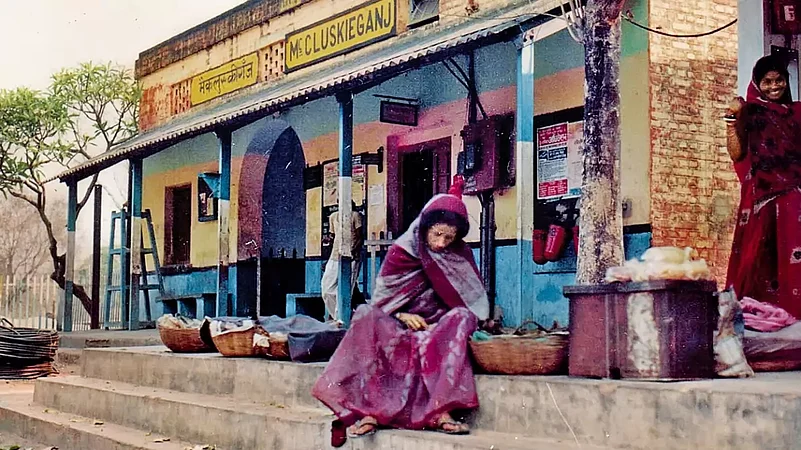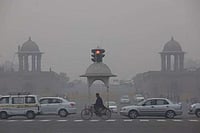Sometimes, while writing a book, it’s the subject that chooses you and not the other way round. My first novel—‘McCluskieganj: The Story Of The Only Anglo-Indian Village In India’—is a perfect example of this. There is an interesting story behind how I ended up writing it.
In the 1980s, I was the bureau chief of a popular Hindi news magazine ‘Maya,’ which was published from Allahabad. It was a purely political magazine that would carry stories from Bihar replete with political clans, mass killings, personal fiefdoms and caste armies, along with Naxalite activities.
From a very young age, I was interested in reading books. I would often request my editor to allow me to write some human interest stories as well apart from the political stories. Due to my constant nagging, sometimes, he would give me a go-ahead. It was in this context that, in 1990, I visited McCluskieganj—the Anglo-Indian town in Chota Nagpur region of the then undivided Bihar—to write a story for the magazine. When I reached the forest hamlet, I was completely mesmerised. It was surrounded by jungles, mountains, river, vines and waterfalls.
When I met the Anglo-Indians living in old Portuguese-style houses, Adivasis staying in straw huts and people from several other communities who were living in McCluskieganj, I realised that a mere four or five-page report in a magazine was not enough to describe the marvelous town. This was an epic novel waiting to be written. I wrote the story for the magazine, but the town and the people I had met stayed with me.
I requested some of the literary bigwigs from Bihar to write a novel on McCluskieganj, but they were not too keen. I had not written a novel until then, so, for a long time, I was not able to gather the courage to begin writing one. But images from the town kept flashing in my mind from time to time and so I decided to take the plunge. I thought, it does not matter if the story is good or bad. It need not be perfect. I decided to write because I fell in love with the town. Also, one can never go wrong when one listens to the heart.

While writing the novel, I made several trips to the town and made many friends. The novel traces the journey of Robin McGowan, who, after living in Hong Kong for 20 years, decides to visit McCluskieganj—an agricultural haven formed in the early 1940s for the Anglo-Indians to live in. His father always told him about this town. When McGowan arrives, he realises that the town is no longer the idyllic home of his father’s childhood. The novel is about McGowan’s search for home, about memory, displacement and the desire to belong.
After doing extensive research, I finished writing a 178-page novel in 1993 and got in touch with many publishers. However, no publisher was willing to publish it. Finally, I had to publish the novel on my own. Even though the novel was received well, some critics tore it apart saying I had not developed the characters properly. I did not get offended by the criticism and started rewriting the text. I kept travelling to McCluskieganj again and again.
The rewritten novel—over 400 pages—was comprehensive and satisfactory. However, it was, yet again, rejected by publishers. Once again, I ended up publishing it on my own. This time, it was well-accepted. However, I was still very much attached to the novel. So, in 2010, when Ashok Maheshwari, the head of Rajkamal Prakashan, the largest publication house in Hindi, expressed his desire to publish the novel, I said yes. “A writer’s job is to write, not publish,” he said.
Interestingly, he had rejected one of the earlier drafts. When he asked me for the rights, I decided to write it for the third time. The frequent visits to McCluskieganj continued. The third draft of the book gave me a lot of joy. In 2011, the book was honoured with the Katha Award at the House of Commons in London. The novel published by Rajkamal Prakashan was sold out. Based on fresh research, I wanted to add some more information to the next version of the novel.
When my publishers asked me for how long I planned to stretch the novel, I replied to them with an anecdote—there was a famous theatre personality in Hyderabad named Baban Khan. One of his famous plays was ‘Adrak ke Panje’ (the claws of ginger). For each show, Khan would add new scenes to the drama. Similarly, till the time I am alive, I may keep adding interesting bits to my novel. My dissatisfaction is the driving force behind this work.
In 2015, Harper Perennial India published the novel in English. I am sometimes asked how I managed to write an extensive 534-page novel on a “small town”. I tell them that the apparently small town actually extends way beyond its boundaries.
For me, the most enjoyable aspect of the novel has been the creative process behind it. At the same time, I appreciate the kind words that critics have written about my novel.
Alison Blunt, a professor of geography at the Queen Mary University of London, has called it “a fantastic tale of productive nostalgia”. Famous Hindi literary critic Namvar Singh has compared my novel—brimming with a wide range of small and big characters—to the Mahabharata. Another critic Dr Parmanand Srivastava writes in his book ‘Alochna ka Rahasyavad’ (the mysticism of literary criticism) that the novel is the modern ‘Kathasaritsagar’—a famous 11th-century collection of Indian legends, histories and folk tales.
Just like me, this unique Anglo-Indian town—which now falls in Jharkhand—has, over the years, attracted many writers, journalists, photographers and painters. It has also been the subject of many documentaries. Actor-director Konkona Sen Sharma has even made a film on it named ‘A Death in the Gunj’. I have received endless love from the residents of McCluskieganj, which always makes me confess that I have two hometowns—an ancestral one in the Sitamarhi district of Bihar, and then my own McCluskieganj.
(This appeared in the print edition as "An Endless Saga")
Vikas Kumar Jha is a journalist and an author






















.png?w=200&auto=format%2Ccompress&fit=max)



